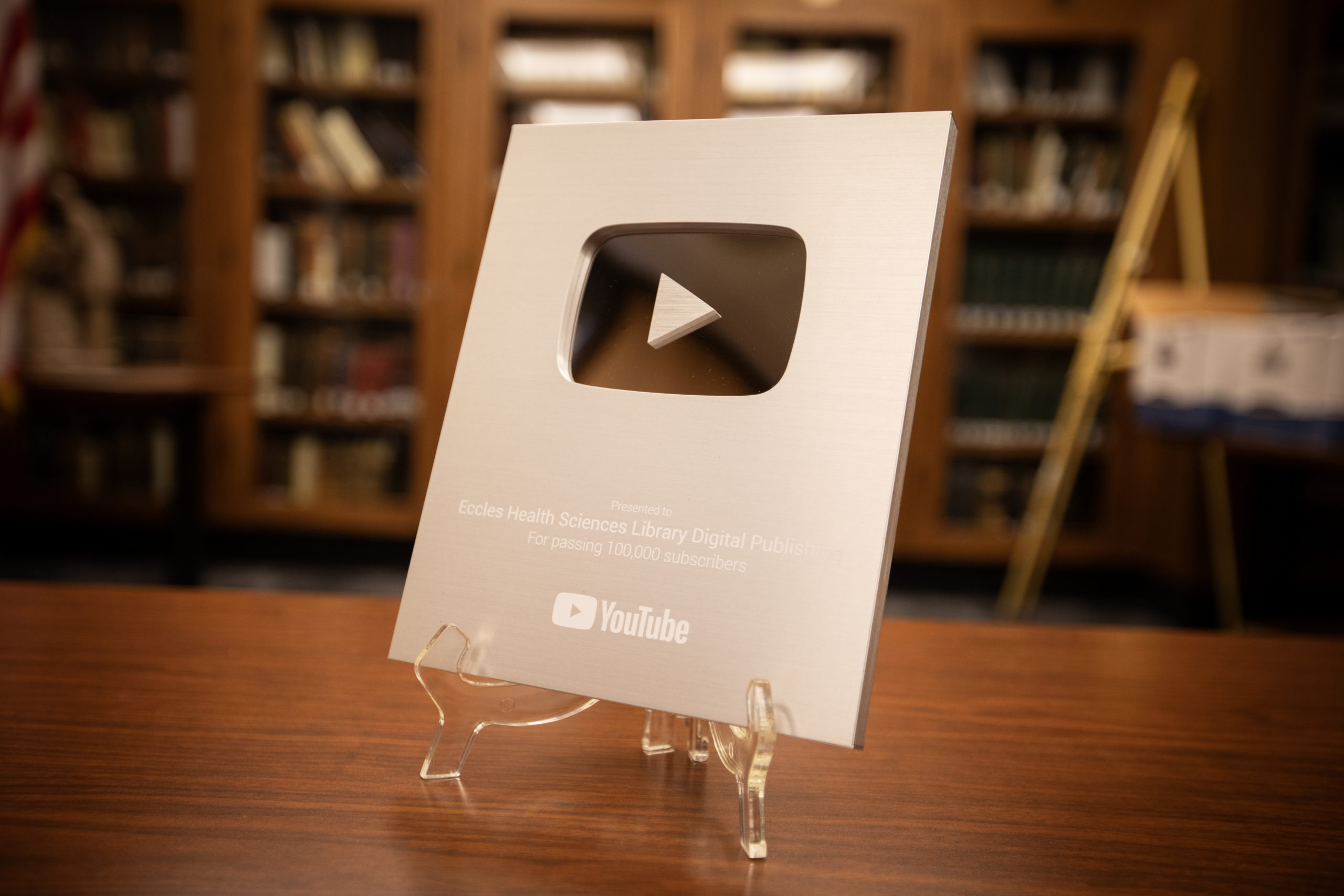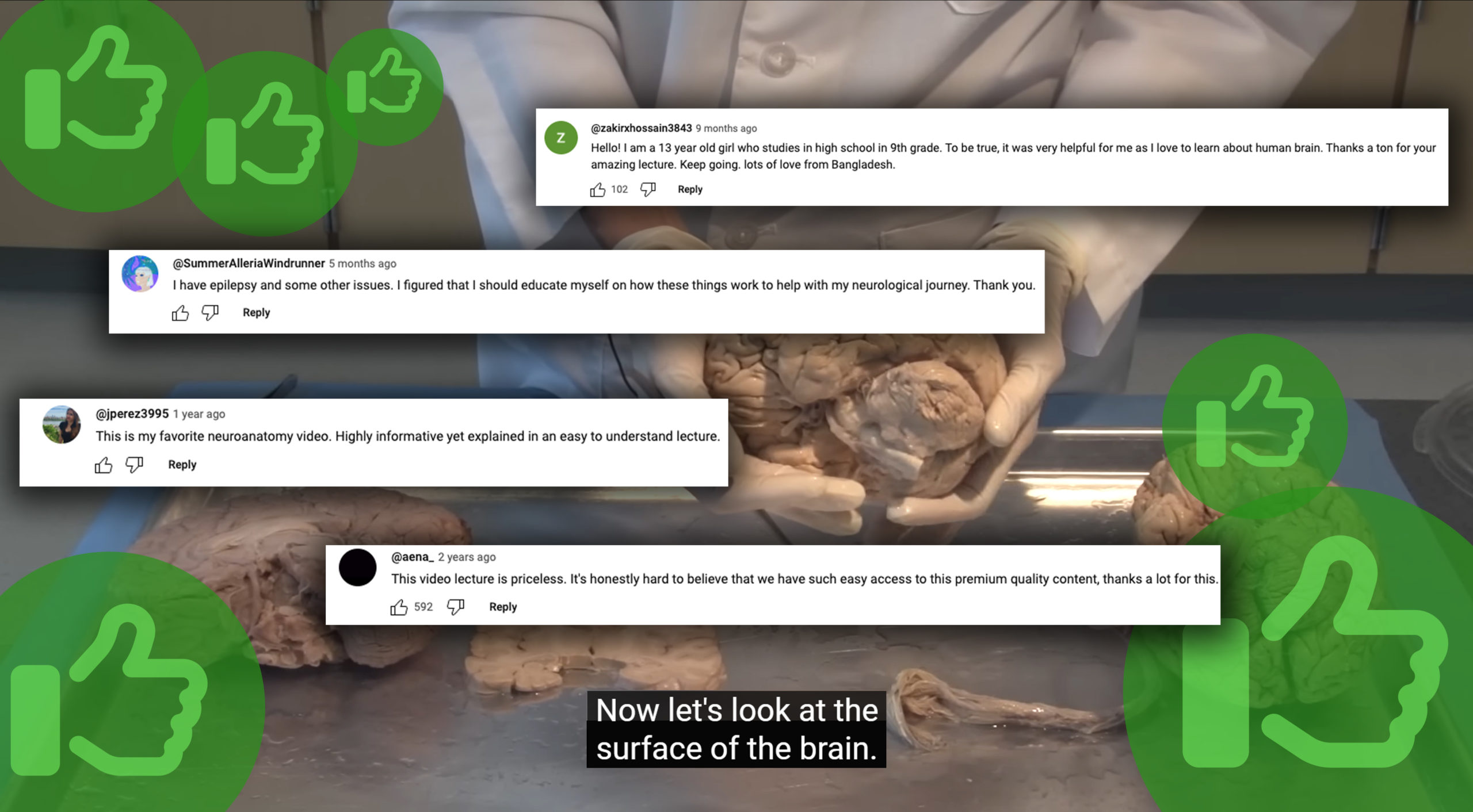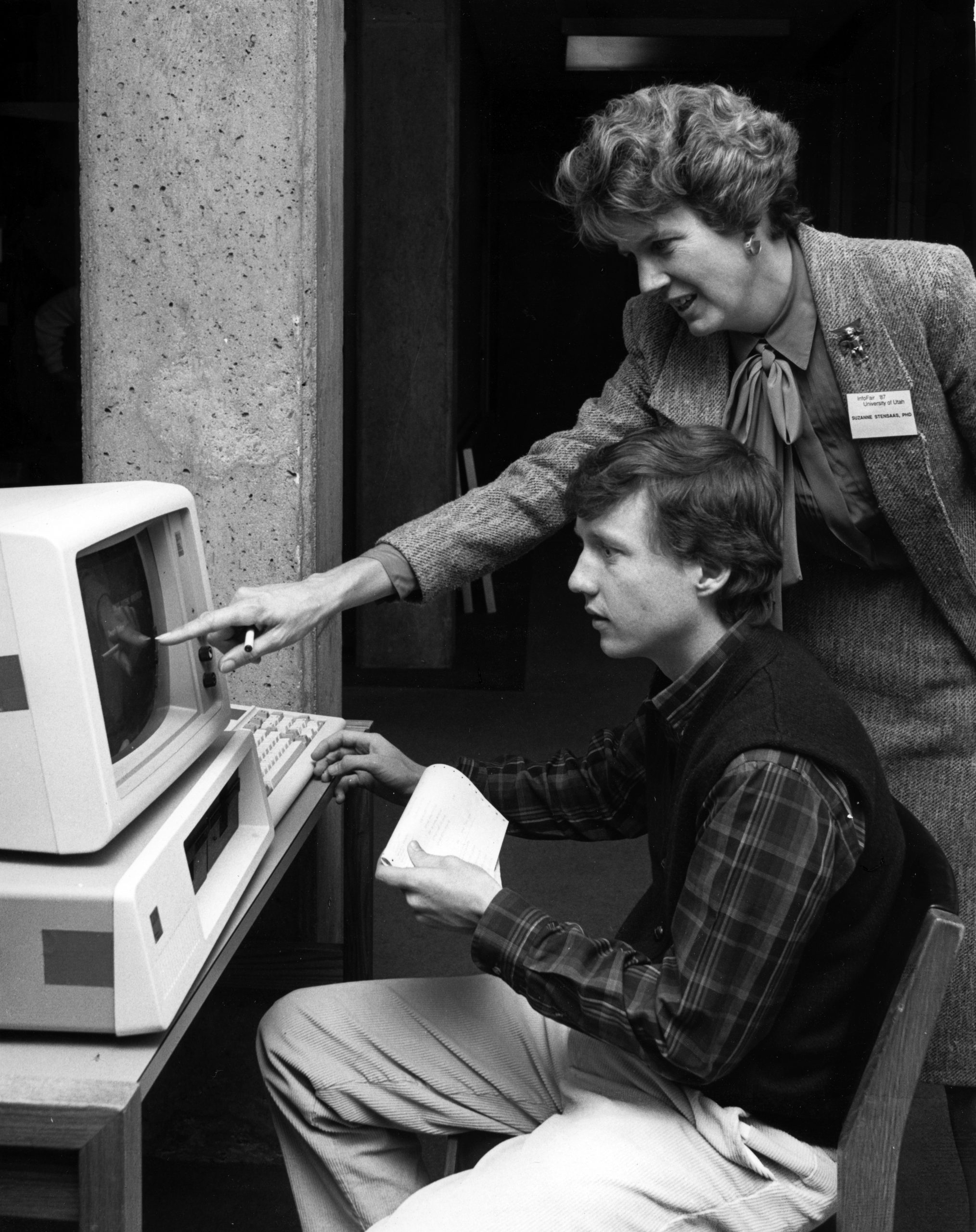The Eccles Health Sciences Library’s Digital Publishing YouTube Channel has achieved an incredible milestone by earning the Silver Play Button Award, recognizing the channel for surpassing 100,000 subscribers.
This accomplishment is largely attributed to the success of the Neuroanatomy Video Lab: Brain Dissections series presented by Suzanne Stensaas, PhD, and produced in conjunction with the Eccles Health Sciences Library. This series of 26 videos offers a comprehensive exploration of brain anatomy including the anatomy of different regions of the brain, the spinal cord, eyes and visual function, and more.

This educational resource reaches viewers worldwide with 24,100,000 views, 90% of which are outside of the United States, and 212,000 subscribers as of November 2024.
About the Neuroanatomy Video Lab: Brain Dissections
This series of Neuroanatomy video lessons with brain dissections has two principal objectives:
- First is to provide viewers access to human brain specimens, something many learners lack access to.
- Second is to simplify the anatomy, omitting advanced details with clear generalizations.
This helps keep the focus on the localization of a patient’s disease within the nervous system. Students are often overwhelmed with excessive neurological detail which makes the correlation of structure and function more difficult. The presentation sequence is in a logical order for a class, but each video is designed to standalone and be used just-in-time to make a clinical point.

A partnership through the decades

This isn’t the first time Suzanne Stensaas partnered with the library for an educational multimedia project. In 1986, Dr. Stensaas developed the Slice of Life project with the purpose of encouraging the development and sharing of educational multimedia applications within health sciences and medical education.
The project began when a laser-produced videodisc was created containing 12,839 images from combined visual resources of University of Utah Health Sciences Departments. Then, in 1988 the first edition of HyperBrain, an Apple Mac computer application used in conjunction with the Slice of Life videodisc, was produced.
Designed to be used by medical students at multiple stages in their neurosciences training, Hyperbrain and Slice of Life became “one-stop resources” for educators and students alike to access and review high quality images related to the health sciences. The videodiscs were made available for purchase and produced in partnership with the Eccles Health Sciences Library for over twenty years.
Sharing educational video content to the world
The Eccles Health Sciences Library has effectively utilized YouTube as a platform to share a diverse range of educational content, including lectures, research presentations, and health sciences demonstrations. By hosting videos on YouTube, the library extends its reach far beyond the confines of locally hosted platforms, making its content accessible to a global audience. This approach not only increases visibility but also promotes the scholarship and knowledge-sharing of the University of Utah’s students, faculty, clinicians, and researchers worldwide, made possible by utilizing one of the largest video sharing platforms in the world.

